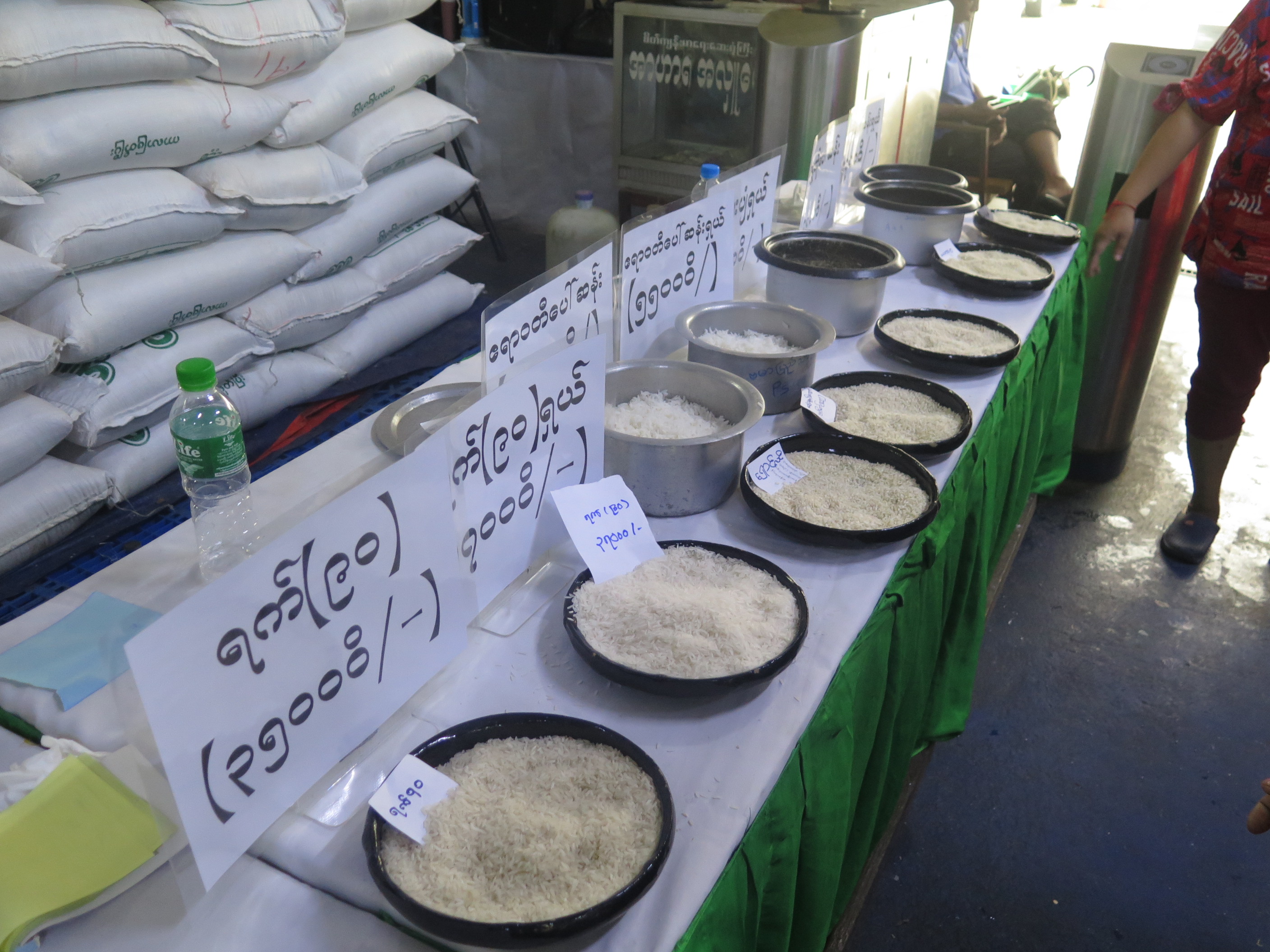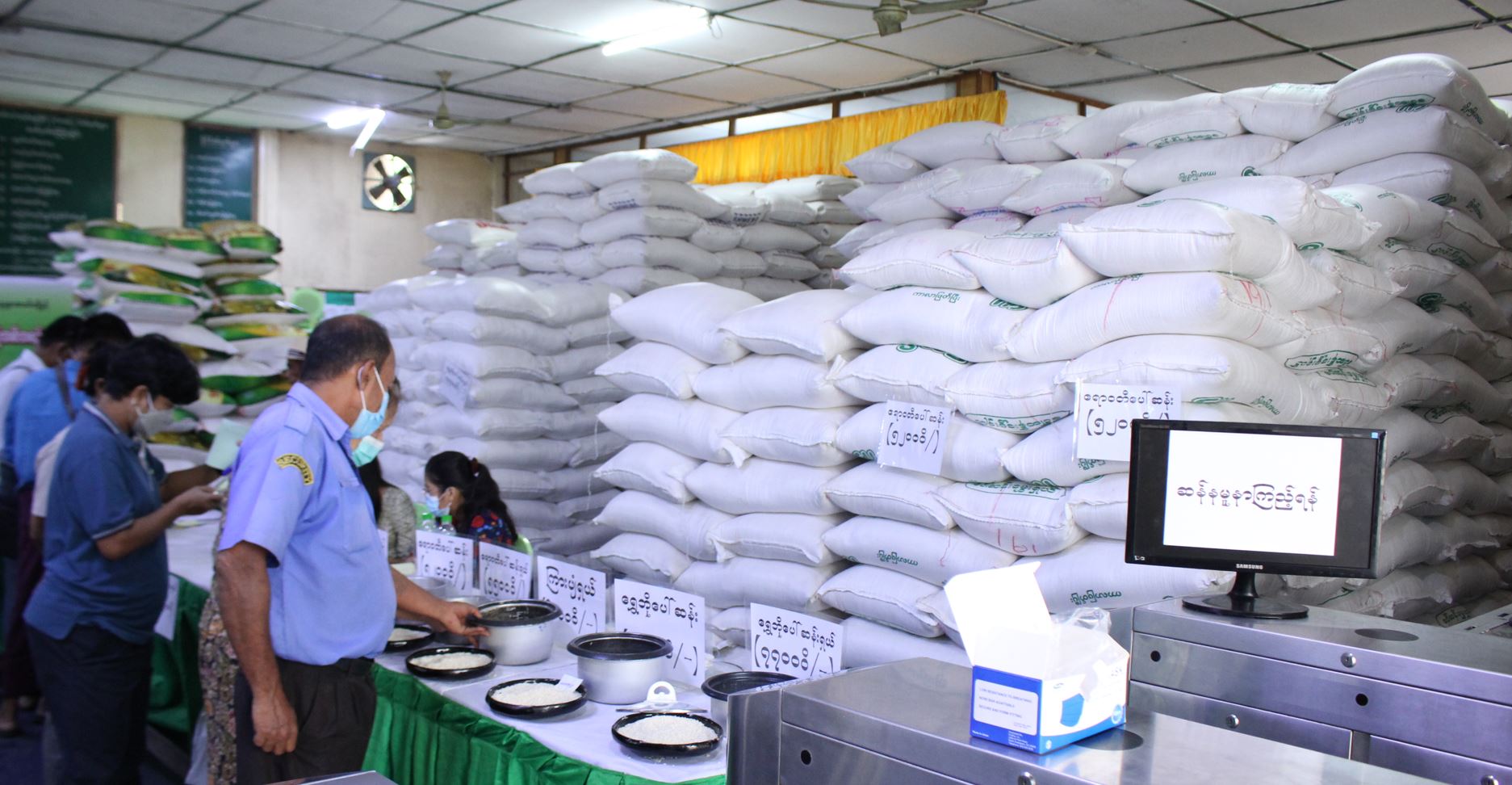CNI News
4 Feb 2023
Rice prices in the domestic market have increased by significant amounts ranging from MMK 5,000 to MMK 10,000 per bag, according to the sources in the rice market.
The rise in rice prices is attributed to the export demand, low stocks for domestic consumption and increases in rough rice prices.
Price rises for rough rice prompted the prices of fine grain rice like Shwebo Pawhsan and Ayeyarwady Pawhsan to follow suit, Secretary U Than Oo of the Bayintnaung Rice Exchange told the CNI.
He said, "Rice price rose by MMK 4,000 per bag in the middle of January. Exporters were buying rice to meet their targets while the prices of rice for domestic consumption rose in small towns. Rice stock is running low because monsoon paddy has been sold out and summer paddy has not been harvested. Those who stored rice have sold out their stocks as they got higher prices. As a result, exporters were forced to pay higher prices and rice prices have risen by significant amounts ranging from MMI 5,000 to MMK 10,000 per bag. The prices of rough rice have risen by MMK 5,000 per bag while that of Pawhsan rice have increased by MMK 10,000 per bag."

Rice being sold at a shop
As rice prices are rising, the public has not hoarded rice and retailers have kept their stock low.
As rice is the staple food in Myanmar, its prices cannot be raised like other commodities because it would place a burden on consumers, Secretary U Aung Myint of the Myanmar Rice Merchants Association told the CNI.
He said, "It is beneficial for farmers but consumers but higher rice prices will place a burden on consumers. Rice prices cannot rise in the same way as gold, foreign currencies and fuel because it is the staple food of the country."
Currently, rice supply to the Bayintnaung Rice Exchange has decreased from 80,000 bags per day previously to only 30,000 bags per day, according to the rice exchange.

Rice being sold at a shop
Secretary U Than Oo of the Bayintnaung Rice Exchange told the CNI, "Local rice merchants raised prices after Shwebo rice prices rose in the earlier days. However, consumers do not buy rice at high prices. Everyone has been struggling to meet both ends and are forced to buy just enough rice to eat for a few days. So, the demand is low and prices are not likely to rise further. However, rice prices are higher at present this year than they were during the same period previous year.
Due to low stocks of monsoon paddy while summer paddy cannot be harvested, rice prices are likely to remain high at the current prices, according to rice merchants.
Amid high domestic rice prices, exporters who have signed contracts with importers are suffering losses and have been advised to ship rice to importers only after summer paddy has been harvested.




